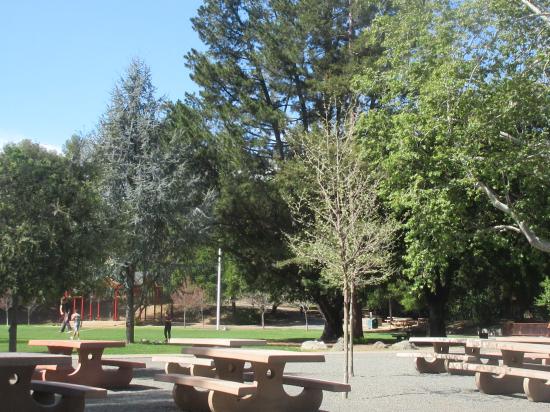Thanks to all who attended, especially those who brought homebrew to share. There are a few important notes I’ll include in the beginning here.
- The sweatshirt and workshirt quote is in, if you missed my e-mail Sunday let me know and I will forward. We need to collect the money for the order before we place it. Please try to pay this week or let me know if you need to make other arrangements
- 2015 membership dues can be paid through PayPal or cash in person if you prefer. Dues are $40 with swag (t-shirt plus glass) or $20 without swag. Please note we are out of XL t-shirts.
- PayPal details for either below
- <https://www.paypal.com/us/webapps/mpp/send-money-online> and use e-mail address: HQ.Treasurer@gmail.com IMPORTANT: When prompted, please be sure to select the send to “Friends or family” option and NOT “Goods or services”.
- PayPal details for either below
- I also sent an e-mail Sunday regarding the May camping trip being organized by the Draught Board. I’ve reserved 2 sites for us that are designated for up to 8 guests. Please let me know through that e-mail if you would like to attend. They’ve been filling up spaces quick with members from several clubs, sounds like it should be a great weekend.
- Please register for the March in club competition if you plan on participating, this is good practice for actual BJCP sanctioned competitions and helps us keep track of participants
Meeting Notes
For those who couldn’t attend, we got the back room at Rookies Sports Lodge in San Jose. It was a large private room, excellent service, decent beers on tap, and good food. We’ll probably be back here in the near future. Next month’s meeting will be at my house, then probably back at Rookies.
Sensory analysis – off flavor kit. Lots of notes at the end of this e-mail
- Caprylic
- Papery
- I happen to come across this article that has a lot of good information on this subject over the weekend http://www.morebeer.com/articles/oxidation_in_beer
- Vanilla
BJCP Competitions
- The Steins comp is free and appears to still be accepting entries. Red dates have past, I think we all missed the national comp.
- Keep in mind any award will get a reimbursement of entry fees from the club
| Registration | Entry Submission | Cost | Judging | |||
| BAM World Cup XXI | 1/19/2015 | 3/4/2015 | 1/19/2015 | 3/4/2015 | 4/4/2015 | |
| America’s Finest City (QUAFF) | 1/26/2015 | 2/11/2015 | 1/26/2015 | 2/11/2015 | 2/20/2015 | |
| AHA National Homebrew Comp | 2/2/2015 | 2/8/2015 | 3/2/2015 | 3/11/2015 | 3/27/2015 | |
| CA State Fair | 4/3/2015 | 5/2/2015 | 5/9/2015 | 5/17/2015 | $15 | |
| Mayfaire (Maltose Falcons) | April? | |||||
| Bridging the Gap (Davis) | 2/27/2015 | |||||
| Napa Homebrewer Classic | 3/30/2015 | 4/11/2015 | 3/30/2015 | 4/11/2015 | $9 | 4/23-5/9 |
| BABO | 2/2/2015 | 4/25/2015 | 3/30/2015 | 4/18/2015 | $9 | 5/9/2015 |
| San Mateo County Fair | 4/3/2015 | 4/25/2015 | ||||
| Amador County Fair | 7/11/2015 | |||||
| Steins | 2/12/2015 | 3/13/2015 | 3/28/2015 | $0 | 3/28/2015 | |
| Modern Times | 4/27/2015 | 5/18/2015 | 5/23/2015 | |||
| Bruery | 4/1/2015 | 4/21/2015 | $10 | 4/26/2015 | ||
- In club competitions
- Single hop – March (get brewing!!!)
- Register at www.beercomps.org/hq
- Next competition – Brew a beer to represent Headquarters at the NCHF club comp. Each club can submit one keg per style, Kentucky Common and Pre-Prohibition Lager. Both are described in the 2014 BJCP style guidelines. The competition is people’s choice, not necessarily to style. We’ll do a preliminary competition, brew one of these stlyes, we’ll vote for the best and the club will pay to re-brew and enter into the NCHF comp.
- Single hop – March (get brewing!!!)
- Style of the month – 13B/16A (2008/2014): Sweet Stout, aka Milk Stout
- Belching Beaver Beaver’s Milk
- Prairie Artisan Ales Limo Tint, milk stout aged on chocolate
- Homebrew share
- Kevin’s single hop pale ale (Simcoe), a sneak peak at the club comp. Crystal clear and lots of fresh hop flavor
- Steven’s Coffee Vanilla Porter, great combination of flavors
- Kyle’s Hibiscus Saison
- Kyle’s Dark Sour, bourbon barrel aged dark sour, one batch plane, one batch aged on cherries with Brett C added
16A. Sweet Stout
Aroma: Mild roasted grain aroma, sometimes with coffee and/or chocolate notes. An impression of cream-like sweetness often exists. Fruitiness can be low to moderately high. Diacetyl low to none. Hop aroma low to none, with floral or earthy notes.
Appearance: Very dark brown to black in color. Can be opaque (if not, it should be clear). Creamy tan to brown head.
Flavor: Dark roasted grain/malt impression with coffee and/or chocolate flavors dominate the palate. Hop bitterness is moderate. Medium to high sweetness provides a counterpoint to the roasted character and hop bitterness, and lasts into the finish. Low to moderate fruity esters. Diacetyl low to none. The balance between dark grains/malts and sweetness can vary, from quite sweet to moderately dry and somewhat roasty.
Mouthfeel: Medium-full to full-bodied and creamy. Low to moderate carbonation. High residual sweetness from unfermented sugars enhances the full-tasting mouthfeel.
Overall Impression: A very dark, sweet, full-bodied, slightly roasty ale that can suggest coffee-and-cream, or sweetened espresso.
Comments: Gravities are low in England, higher in exported and US products. Variations exist, with the level of residual sweetness, the intensity of the roast character, and the balance between the two being the variables most subject to interpretation.
History: An English style of stout developed in the early 1900s. Historically known as “Milk” or “Cream” stouts, legally this designation is no longer permitted in England (but is acceptable elsewhere). The “milk” name is derived from the use of lactose, or milk sugar, as a sweetener. Originally marketed as a tonic for invalids and nursing mothers.
Characteristic Ingredients: The sweetness in most Sweet Stouts comes from a lower bitterness level than most other stouts and a high percentage of unfermentable dextrins. Lactose, an unfermentable sugar, is frequently added to provide additional residual sweetness. Base of pale malt, and may use roasted barley, black malt, chocolate malt, crystal malt, and adjuncts such as maize or brewing sugars.
Style Comparison: Much sweeter and less bitter than other stouts (except the stronger tropical stout). The roast character is mild, not burnt like other stouts. Somewhat similar in balance to oatmeal stouts, albeit with more sweetness.
Vital Statistics: OG: 1.044 – 1.060
IBUs: 20 – 40 FG: 1.012 – 1.024
SRM: 30 – 40 ABV: 4 – 6%
Commercial Examples: Mackeson’s XXX Stout, Watney’s Cream Stout, St. Peter’s Cream Stout, Marston’s Oyster Stout, Samuel Adams Cream Stout, Left Hand Milk Stout, Lancaster Milk Stout
Caprylic
Caprylic flavour is produced by yeast during conditioning (cellaring) of beer. Caprylic is a desirable flavour character of some pale lager beers. Off flavour at high concentrations. Goaty, Waxy or Tallowy
Flavour Descriptor: Sour/sour milk
Common Sources: Beer spoilage bacteria
Papery
The papery flavour note is formed during beer storage. Development of character depends of time and temperature of storage and oxygen of packaged beer. Papery is an off flavour in beer associated with ageing. Cardboard or Oxidized
Flavour Descriptor: Cardboard/oxidized
Common Sources: Product of oxidation/staling
Vanilla
Formed in some beers dureing ageing. Derives from breakdown of the barley cell wall materials. Can also be formed from the breakdown of certain phenolic compounds produced by wild yeasts. Vanilla imparts a positive aroma to some beer styles. Custard like, Cream soda or Ice cream
Flavour Descriptor: Custard powder
Common Sources: Specific styles, phenol flavour compound, or wild yeast


